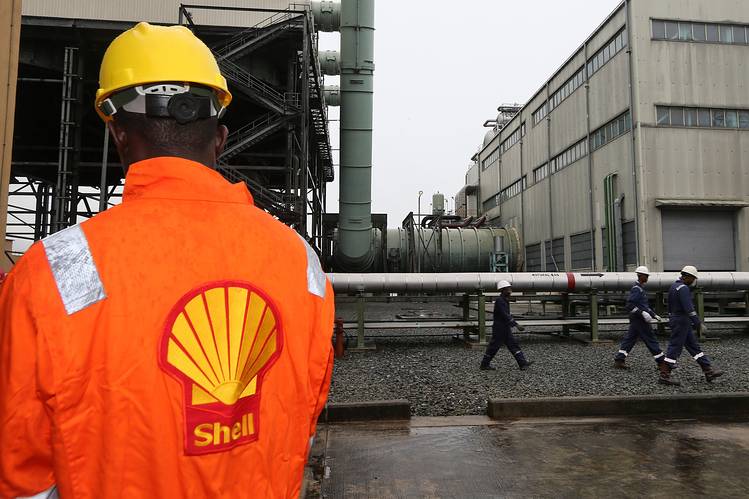Shell’s Gas FID Reprices Nigeria’s Risk
Shell’s $2 billion HI gas FID adds 350 mmscfd capacity, strengthening Nigeria’s LNG and FX resilience as NGN=X stabilizes; SHEL leads execution while BZ=F oil and TTF=F gas benchmarks anchor revenue outlook and investor confidence through 2028.

Shell’s $2 billion final investment decision for the HI offshore gas project in Nigeria marks a structural return of long-cycle foreign capital to the country’s energy sector. After a decade of deferred investments and regulatory drift, the commitment restores upstream momentum and validates the Petroleum Industry Act’s fiscal terms. The plan targets 350 million standard cubic feet per day at plateau—about 3.6 billion cubic meters annually—using subsea tie-backs to existing deepwater infrastructure to lower unit capex and compress time to cash flow. The signal to investors is clear: policy consistency and FX reform are now sufficient to underwrite multi-year returns in Nigerian gas.
Macro conditions reinforce the case. Real GDP growth is projected near 3.8% in 2025 as hydrocarbons, manufacturing, and services recover. Headline inflation, which peaked above 30% in 2024, is easing toward 22–24% by late 2025 as FX liquidity improves and monetary settings tighten. Gross reserves of roughly $34 billion provide near six months of import cover. The naira (NGN=X) has stabilized around ₦1,550–₦1,600 per USD after window unification, narrowing arbitrage and improving price discovery. Public debt near 40% of GDP and a projected 2025 deficit around 4.8% of GDP keep fiscal space constrained, but credible private capex can lift growth without widening the sovereign’s funding gap. As reform traction improves the balance of payments, Nigeria’s risk premium compresses, reopening market access and improving term structure for corporates alongside the sovereign as tracked by broad EM bond proxies like EMB.
The project’s real-economy transmission runs through power, industry, and export channels. Nigeria’s system under-delivers gas to the grid and large users, forcing plant deratings and diesel substitution. Incremental supply of 350 mmscfd—roughly 30% of current delivered volumes—can raise available feed-gas above 1.1 billion scfd by 2028, lifting capacity factors for gas-fired plants and lowering power costs that erode manufacturing margins. At regulated domestic prices averaging $2.25–$2.50/MMBtu, gross annual revenue potential exceeds $300 million for domestic volumes alone, with upside from export-linked sales if feed-gas supports LNG utilization. Combined royalties and profit taxes could add $150–$200 million per year at plateau, strengthening non-oil revenue that remains below 8% of GDP.
Capital-flow dynamics are material. FDI into Nigeria fell from $8.8 billion in 2011 to under $3 billion in 2023. A $2 billion program spread over 2025–2028 can lift the annual FDI stock by roughly 0.6 percentage points of GDP and deepen FX liquidity. A Tier-1 IOC commitment typically catalyzes co-financing from multilaterals and export-credit agencies, lowering weighted average cost of capital for pipelines and processing. As milestones are met, sovereign spreads tend to narrow, easing the interest burden and improving bank risk appetite for private energy credit. The interest-rate channel then feeds back into the real economy: lower sovereign yields reduce crowding-out, enabling corporates to term out borrowing and accelerate capex.
Project economics remain sensitive to governance and security. Contract sanctity under the PIA must hold across electoral cycles. The Niger Delta’s security environment can add significant non-productive costs if not contained. FX policy credibility is pivotal because revenues accrue in USD while many obligations—taxes, salaries, local content—are naira-denominated, exposing internal rates of return to currency volatility. Supply-chain risks persist, including subsea equipment lead times and domestic fabrication capacity; modular tie-back design mitigates schedule risk relative to greenfield, but not fully. Global pricing also matters: Brent (BZ=F) volatility affects cash generation indirectly through sector funding conditions, while TTF=F benchmarks shape export realizations if incremental gas supports LNG loadings.
Global positioning adds strategic weight. Additional Nigerian gas supports Europe’s diversification as TTF=F stabilizes in the €25–35/MWh range, providing a dollar hedge for Nigeria’s fiscal accounts. Regionally, expanded feedgas can reinforce West African pipeline connectivity and anchor industrial gas demand at home. For investors, the development re-anchors Nigeria on the EM energy map alongside peers where gas projects underpinned macro repair, translating into narrower credit spreads, improved equity risk premia, and deeper local debt markets.
The forward test is measurable and time-bound. Over the next 12–24 months, confirm sustained FDI above $4 billion annually, NGN=X trading within ₦1,500–₦1,600 per USD, and engineering progress approaching 50% completion by 2027. By 2028, delivered gas utilization should exceed 1.1 billion scfd, LNG loadings should rise, and diesel imports should fall—cutting FX leakage by up to $2–$3 billion per year. If these indicators print, Shell’s HI FID will represent a durable inflection where policy coherence converts resource endowment into macro stability and investable cash flows.





